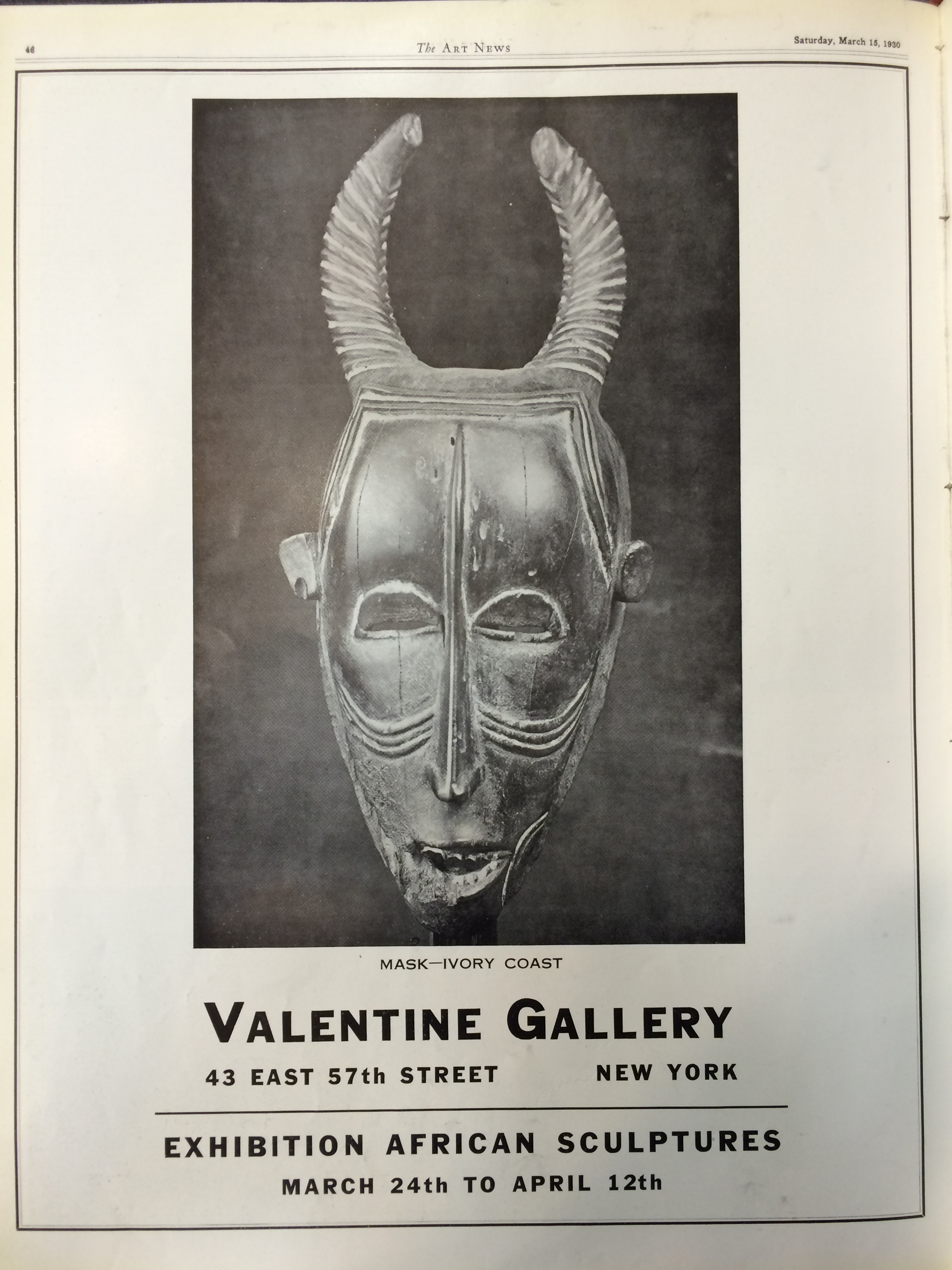The Paul Guillaume Collection of African Art Comes to the Valentine Gallery
According to Dr. Albert C. Barnes, Parisian art dealer Paul Guillaume's greatest contribution to the art world was that he rescued African Art "from its mere ethnological significance and converted it into a well of unsuspected spiritual richness from which the whole modern movement in art has drunk deeply."*
Paul Guillaume (1891-1934) arrived in Paris during the first decade of the twentieth-century. He worked in an upscale garage that imported rubber for tires from the French colonies. One of the suppliers included a statuette in a rubber shipment as a gift for Guillaume that he placed on display in the garage's window. There the piece attracted the attention of art critic and poet, Guillaume Apollinaire, who came inside to inquire about it. The two men became friendly and Apollinaire introduced Guillaume to his artist friends including Maurice de Vlaminck, André Derain, Amedeo Modigliani, and Pablo Picasso. All shared an interest in African sculpture.
With access to the works of this circle of artists, Paul Guillaume opened a gallery in February 1914 but was forced to close that summer once the war began. In an effort to generate income, Guillaume gave Marius de Zayas a trunk full of sculptures to take to New York to exhibit at Alfred Stieglitz's gallery "291." Objects that had previously only appeared in natural history museums were displayed on pedestals and artfully installed on the walls against large sheets of red, yellow, and black paper. Presenting the sculpture as "the root of modern art," 291 was the first to show African sculpture as Art.
Guillaume reopened his gallery in 1917 and soon became an important venue for the School of Paris. By 1929 he was financially overextended, however, and decided to sell his collection of African art. Recognizing an opportunity to display and market such a well-known and highly respected collection, Valentine Dudensing offered to publish a lavish, fully-illustrated catalogue documenting the works. Guillaume consented and in the spring of 1930, the Valentine Gallery presented an exhibition of seventy-four pieces from the Paul Guillaume Collection.
An Exhibition of Rare African Sculptures ran from March 24-April 12, 1930 and featured statues and masks from the Ivory Coast, Cameroon, Sudan, and Gabon. The Valentine Gallery audience had come to know the School of Paris paintings that were inspired by Guillaume's African collection and now they had the rare opportunity to see and even acquire the pieces for themselves.
---------------
*Laurie Eglington, "Untimely Passing of Paul Guillaume Evokes Memories," The Art News (October 27, 1934), 4.
